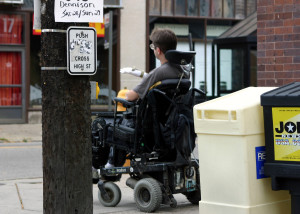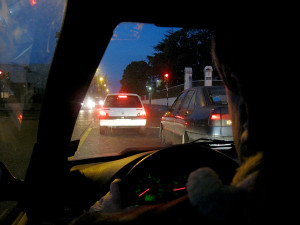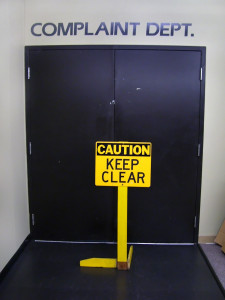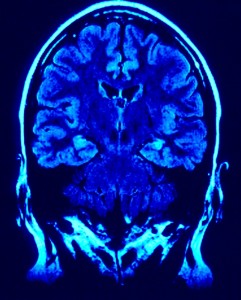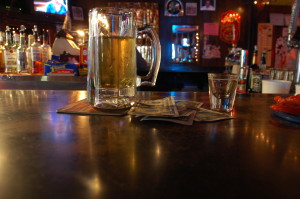Being a pedestrian is dangerous. Each year in the United States roughly 5,000 people are killed in pedestrian accidents and another 76,000 are injured. But recent data shows the risk to pedestrians using wheelchairs is even more profound as those individuals are 36% more likely to die in an accident with a vehicle. The majority of these crashes occur while the wheelchair user is properly within the crosswalk, and about 18% of the crashes occur where no crosswalk was available. Why is this happening? Continue reading
Articles Posted in Automobile Accidents
National Drowsy Driving Prevention Week: 5 Tips For Staying Awake and Alive
More than 1/3 of Americans have reported following asleep at the wheel, and drowsy driving causes roughly 100,000 accidents each year, claims roughly 1,500 lives and results in 71,000 injuries. In fact, driving while sleepy can impair your performance as much as alcohol.
While drowsy driving can affect anyone, some folks are more at risk than others and include: Continue reading
Ten Steps To Safe Halloween Driving
Tomorrow night is Halloween. If your kids trick-or-treat on the ever-popular Richland Avenue in Nashville or Main Street in Franklin, then they can collect candy without worrying about cars. But most streets in our area are not closed for trick-or treating, so it is imperative for drivers to exercise extra care to help keep Halloween safe. Here are 10 tips: Continue reading
Avoidable Liabilities: A Rant
I just read an article that suggested tech companies like Google and Apple should rethink entering the automotive market because it is a “different animal” due to the cost associated with building auto plants, building sales and service networks and the “daunting liabilities involved when human lives are at stake.” Retired Vice Chairman of General Motors actually sneers at the notion that “Silicon Valley techies” could do it smarter or better. While admittedly, I do not have much information or expertise on the cost of plants or the network issues, let me rant for a moment, if you will, on the liabilities issue. Continue reading
Feel Free To Complain
Some people are natural born complainers. Like this one from Middle Class Problems on Twitter: “A pecan from my maple and pecan slice has tragically fallen into my fresh coffee. Worst day ever.” (If you have never checked out Middle Class Problems, you should.) But some of us are loathe to complain. We do not want to be perceived as demanding, obnoxious, whiny, needy, etc. Or, we don’t complain because we think it will not do any good. But from my perspective as a personal injury lawyer, there are times when it is critical to complain. Below are 5 times you should complain freely and without hesitation. Continue reading
So More People Are Dying in Tractor-Trailer Accidents. What’s the Big Deal?
This seems to be Congress’ position on the issue. Because in the past year, they have decided to weaken a number of important safety measures despite the fact that the death toll in truck-involved crashes has risen 17 percent from 2009 to 2013 (which is the most current data) and despite the estimated cost of tractor-trailer and bus accidents is roughly $99 billion dollars a year. Yes, that is billion with a B. And, that is just economic cost. It does not reflect the emotional suffering the victims and their families suffer as a result of these accidents. So, let’s take a look at just a few steps that Congress has taken in favor of the trucking industry and against the rest of the motoring public. Continue reading
Is Your Dog Putting You At Risk of Getting Sued?
If you follow us on Google Plus or regularly read this blog, then you know our family recently acquired a Cavalier King Charles Spaniel If you don’t follow us on Google Plus, then let me first say you should and second let me introduce you to Lincoln Day. Lincoln is the love of my 7 year-old daughter’s life. Thankfully, we are past the potty-training stage and are now working on what is appropriate behavior when guests arrive at our house, how to properly walk on a leash, etc. As my daughter is finding out, owning a pet is a big responsibility.
Unfortunately, some pet owners do not take it seriously enough, so we thought we would outline, from a legal perspective some considerations and actions you should be prepared to take before taking on a pet. Continue reading
The Blood Test You Need If You Have A Suspected Brain Injury
Each year, more than 1.4 million people will suffer a brain injury from a car accident, fall, assault or some other cause. The brain is incredibly complex and so is the treatment of brain injuries. Primarily, physicians have relied upon CAT scans and physical symptoms such as loss of consciousness, dizziness, nausea, slurred speech, confusion and the like to determine the severity of the brain injury.
But both of those methods have their limitations. For instance, CAT scans can only detect if there is cranial bleeding. They are unable to detect damaged brain cells that are not bleeding. As for the physical symptoms, they may not always be detected or reported. For instance, in a car accident, a person may lose consciousness for a short period of time and regain it before any emergency medical personnel reach the scene. Or with a young infant who has not yet learned to talk, it would be difficult to know if the child was slurring its speech or was dizzy, etc. Continue reading
A Man Walks Into A Bar . . .
And stabs and kills his mother’s boyfriend. The parents of the murder victim sue the restaurant and win $40 million dollars. Probably not the punchline you were expecting and you might be wondering how the restaurant is to blame. Well, let me give you a few more facts. Continue reading
New Technology To Prevent Drunk Driving
Driver Alcohol Detection System for Safety (DADSS) will prevent a car from moving if the driver has a blood alcohol concentration at or in excess of .08, which is the legal limit in all 50 states. The technology is available in two forms: breath analysis and touch analysis. With breath analysis, the driver simply exhales normally into the device for an instantaneous measurement. And for those with a germ phobia, you do not have to actually touch your mouth to anything. The system is contact- free. The touch system measures BAC under the skin’s surface via the use of an infrared light at the fingertip. So when will it be available and where? Continue reading
 Tennessee Injury Law Center
Tennessee Injury Law Center


